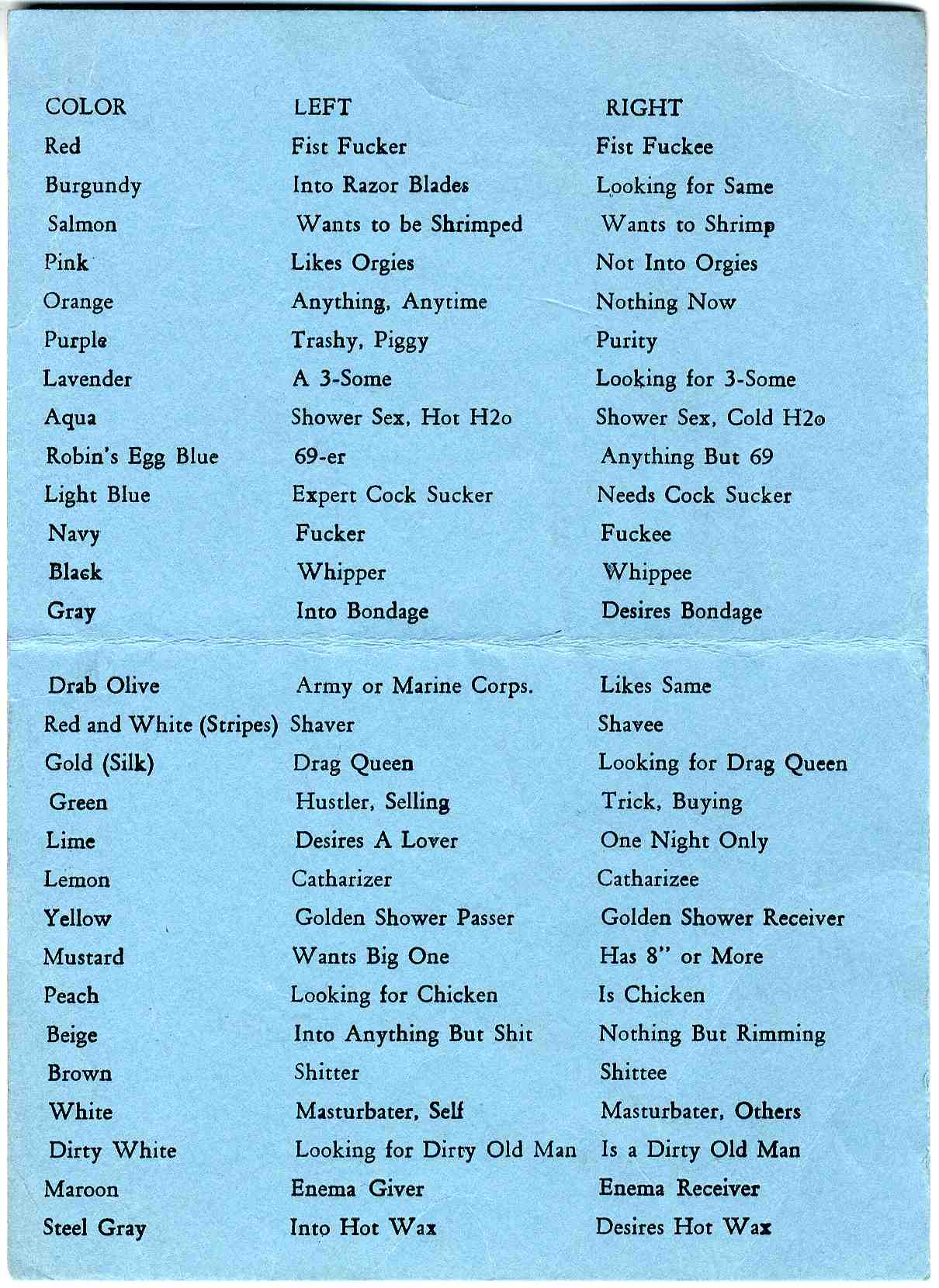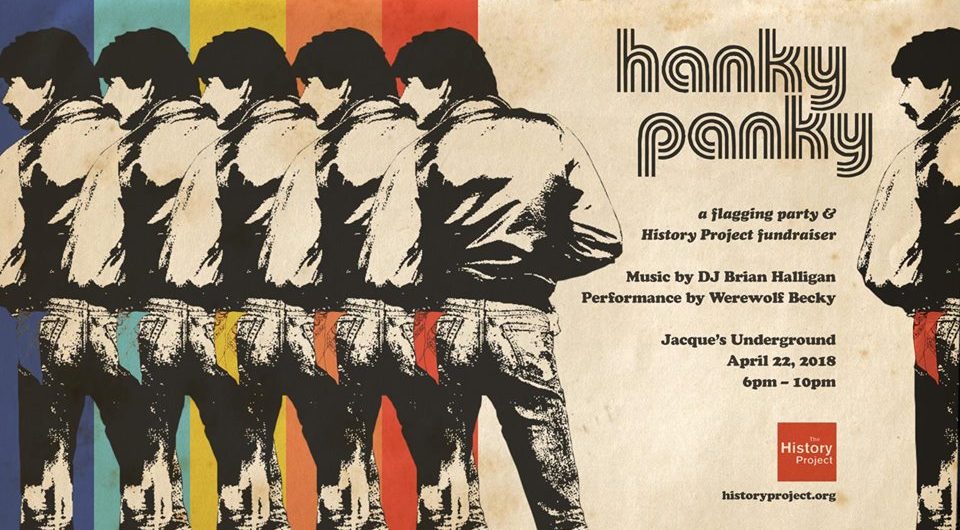The “hanky code,” a secret queer cruising code of the 1970s, was a way to signal your sexual desires via flagging—hanging a bandana from the back pocket of your tight jeans. Sporting a navy bandana in your left back pocket signaled you liked to be on top. Or put a navy bandana in your right pocket to say you enjoyed being on the bottom. A red bandana would tell those in the know that you were into fisting.
“We were headed into this period of liberation, this period of justice orientation, and looking for rights and being expressive,” says Raul Cornier, who’s researched the history of the fashion practice. “I think that’s why it became really popular. … It did lend itself to that environment or atmosphere of expression and freedom and even transgression beginning to become okay.”
The organizers of “Hanky Panky: A Flagging Party and History Project Fundraiser” at Jacque’s Underground in Boston from 6 to 10 p.m. Sunday, April 22, 2018, aim to bring the style back for one night. And they hope to raise funds for The History Project, a Boston group of historians, archivists and activists who’ve been documenting and collecting artifacts of the history of the LGBTQ community here since 1980.
Guests are invited to dress 1970s and wear their own hankies or buy some that organizers will have for sale at the event. DJ Brian Halligan aims to spin tunes that evoke the 1970s and ‘80s when the hanky code was most in use, for a darker, electronic leather bar kind of feel. Werewolf Becky will perform.
“It will allow people to sort of play with the idea,” Halligan says. “And we’re handing out a postcard with the code when they get there.”
The party was inspired by a talk that Raul Cornier gave at Boston’s History Project in January. A Boston-based graduate student at the University of Rhode Island in Kingston, he began his research into hanky flagging as part of his study of the history of textiles and fashion.
The hanky code, he says, seems to have originated in San Francisco among gay white men flagging with red and blue bandanas in the 1970s, or perhaps as early as the late 1960s.
“People were already flagging with their keys,” Cornier says. Inspired by biker style, gay men began hanging keys from the left belt loop of their jeans to signal they were tops and from their right loop to signal they liked being bottoms. “Keys identified your sexual availability and your role. Bandanas were used to identify your practice … your particular fetish.”
How did the code expand? Cornier says there’s a legend that a couple gentlemen working in a queer novelty shop decided—partly as a joke, partly as a way to drum up business—to expand the code with references to more fetishes and then sell bandanas in a wider variety of hues. “It stuck. People took it seriously in a way,” Cornier says.

Help Wonderland keep producing our great coverage of local arts, cultures and activisms by contributing to Wonderland on Patreon. And sign up for our free, weekly newsletter so that you don’t miss any of our reporting.
Then the lists started to show up. As part of the promotion of “Hanky Panky” organizers have shared a vintage flier from The Boston Eagle, when the bar was located on Queensberry Street. One side advertises the bar. The other side is a list of hanky colors and what pocket to wear them in to signal interest in orgies, threesomes, shower sex, whips, bondage, masturbation, dirty old men, being shrimped and so on.
“I know a lot of the bandanas were sold with these little decoders,” Cornier says. “This became a way for these businesses to advertise. You have the flier on one side and the code on the other.” Shops, bars, gay newspapers printed them.
“You could communicate with people within the queer community familiar with it but also be out in public with it,” Cornier says.
“It was the only way you could let relative strangers know what your sexual preferences were before talking with them,” Halligan says.
Photographer “Robert Mapplethorpe in one of his bios,” Cornier says, “he mentions stitching multiple bandanas together to flag that many because he wanted to make sure he got everything covered.”
As early as 1978, the code was taken up in parts of the lesbian community, Cornier says—and adapted to signal interest in fisting, anal, oral, food, Victorian scenes, bondage, breasts, menstruation.

“It was right at the time of real gay liberation via disco and everything else,” Halligan says “The liberation of nightlife culture coincided with disco. It was an innocent time in many ways. The possibilities felt limitless. Then AIDS came and changed everything.”
“The presence of AIDS does put an immediate halt to a lot of this. And that’s when we see the hanky code begin to go back underground,” Cornier says.
Bandana flagging remained a part of the predominantly white male leather culture, he says. “It never really fell out of favor,” Cornier says. And he notes, some “trans men are now flagging with a plaid hanky.”
Help Wonderland keep producing our great coverage of local arts, cultures and activisms by contributing to Wonderland on Patreon. And sign up for our free, weekly newsletter so that you don’t miss any of our reporting.
